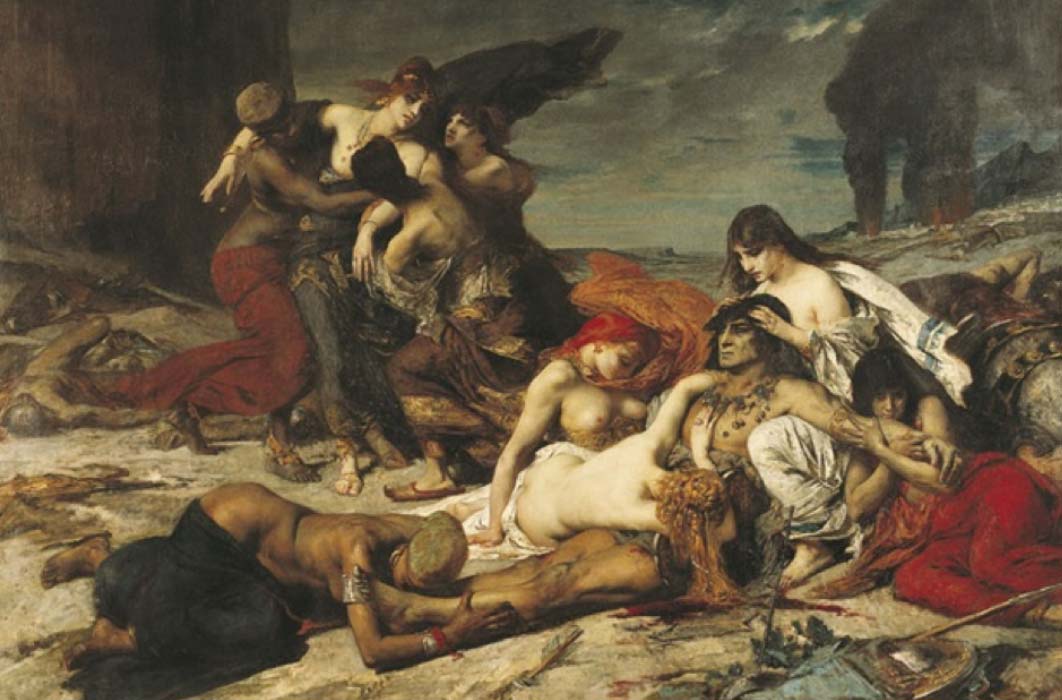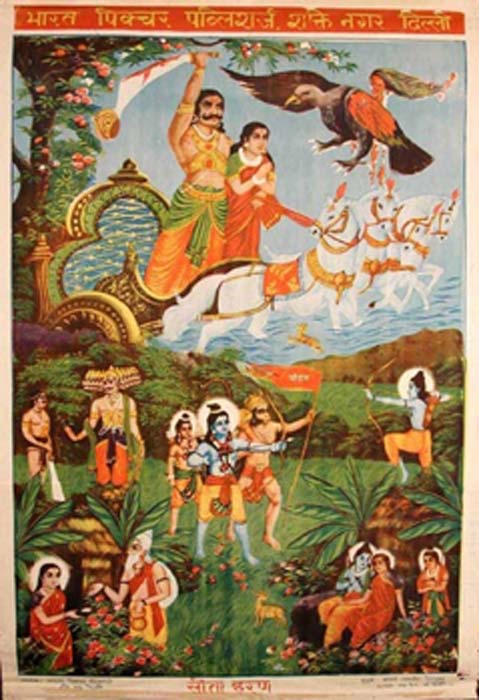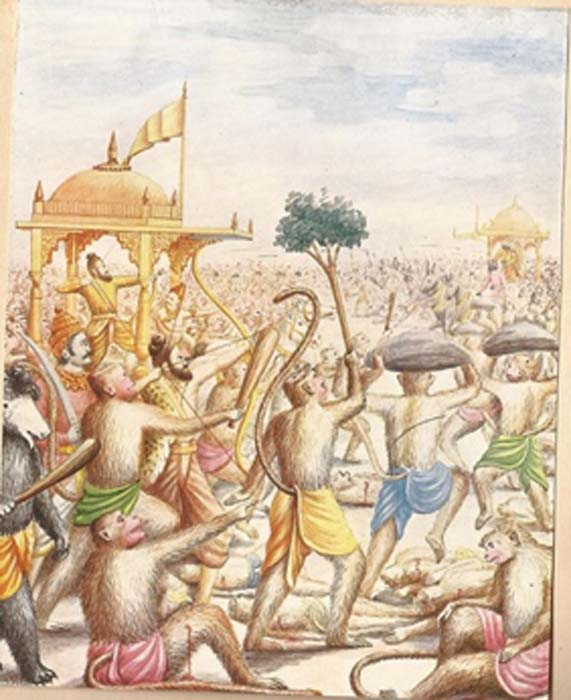
Rakshasas: Taunting Demons Tainted with Human Emotions
According to Hindu mythology, Satya Yuga signals the era during which the gods and intrinsic goodness ruled humanity, and at the end of his labors, the creator god, Brahma, sleeps. But during his deep slumber, Brahma’s breath created enormous, blood-thirsty fanged creatures with sharp, claw-like fingernails. Growling like beasts, these creatures turned upon Brahma and began devouring him. Brahma woke and shouted "Rakshama!" (Protect me!) and Vishnu, the god of protection and the preserver of good, came to his aid and banished all these strange creatures to earth. These creatures were then known as Rakshasas, after Brahma's cry for help.

The three-headed Rakshasa Trishiras (1830) (Public Domain)
The Diverse Nature of Rakshasas
The Rakshasas are most powerful in the evening, especially during the darkest period of the new moon, before being dispelled by the rising sun. Although they have the power to change their shape at will and appear as animals, monsters, or beautiful women, sculptures and literatures generally depict the Rakshasas with a terrifying appearance - fearful side tusks, ugly eyes, curling brows and carrying a variety of horrible weapons - thus establishing them as the antagonists of the epics and traditional opponents of the heroes.

Sita Haran, or the abduction of Sita, in a calendar cover (c.1950)(Public Domain)
Although the term Rakshasa seems to generally apply to those demons who haunt cemeteries, eat human flesh and drink the milk of cows dry as if by magic, like human beings, there are many kinds of Rakshasas and, like humans, they also experience rage, heartbreak and struggles. For example, not all Rakshasas are ugly. In the Sundara Kanda, the fifth book of the Hindu epic Ramayana, Hanuman describes the Rakshasa women as ‘beautiful, moon-faced, radiant and lotus-eyed’. Searching for Sita in the palaces of Laṅka, Hanuman even mistook Mandodari, a Rakshasi (female Rakshasa) as well as the wife of the Rakshasa king Ravana, for Sita herself. Evidently, Hanuman perceived Mandodari as a beautiful woman.

The battle between Ravana, King of the Rakshasas and the army of Vanaras (monkeys) by Balasaheb Pant Pratinidhi (1916) (Public Domain)




